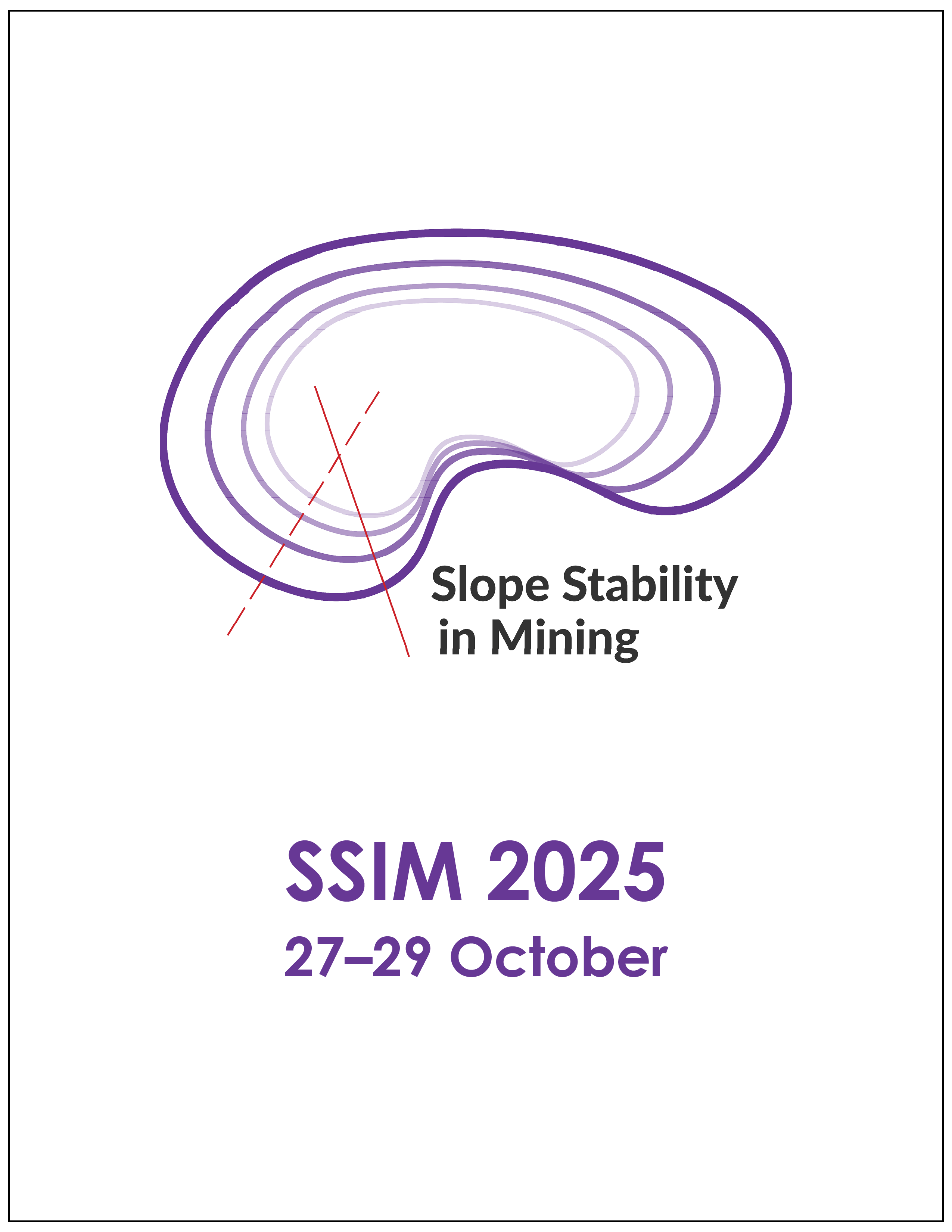Observational method applied to pit slopes informing the characterisation, design and monitoring process for an open pit mine: a case study

|
Authors: Villegas, F; Calderon, J; Vasquez, P |
DOI https://doi.org/10.36487/ACG_repo/2535_16
Cite As:
Villegas, F, Calderon, J & Vasquez, P 2025, 'Observational method applied to pit slopes informing the characterisation, design and monitoring process for an open pit mine: a case study', in JJ Potter & J Wesseloo (eds), SSIM 2025: Fourth International Slope Stability in Mining Conference, Australian Centre for Geomechanics, Perth, https://doi.org/10.36487/ACG_repo/2535_16
Abstract:
This paper presents the application of the observational method (OM) to slope design in open pit mining, highlighting its effectiveness in managing geotechnical uncertainty and enhancing slope reliability. While widely applied in underground works, the OM remains underutilised in open pit environments. Through a structured cycle of predict–monitor–reconcile, the OM enables dynamic updates to design parameters based on actual slope behaviour. A case study at BHP's Escondida mine illustrates how the OM guided design adjustments following unexpected slope instability, particularly where rock mass properties deviated from initial assumptions. The methodology supported back-analysis, model reconciliation and outcomes such as reduction of inter-ramp angles, improving slope stability and increasing reliability in the mine plan. Such backanalysis and reconciliation are necessary considering the uncertainty in the critical geotechnical parameters that drive slope instabilities, impact the mine plan and may lead to a decrease or increase in inter-ramp angles if the actual slope performance is significantly worse or better that the expected one. Integrating reliability assessments and parameter uncertainty indices further weaker or strengthened the design process. This work advocates for the systematic implementation of the OM in open pit slope engineering as a best practice for managing geotechnical risk.
Keywords: observational method, pit slope design, design guidelines, geotechnical monitoring, failure mechanisms, slope design process
References:
Chiwaye, H & Stacey, T 2010, ‘A comparison of limit equilibrium and numerical modelling approaches to risk analysis for open pit mining’, The Journal of The Southern African Institute of Mining and Metallurgy, vol. 110, pp. 571–580.
Creighton, A, Bixley, M, Elmouttie, M, Hassall, M, Macciotta, R & Juldz, A 2022, ‘A reliability-based design acceptance criteria approach for inter-ramp and overall open pit slopes’, Proceedings of the International Slope Stability 2022 Symposium, Tucson.
Dinesh, PND 2006, ‘The observational method in geotechnics’, in Y Potvin, E Thomas & A Fourie (eds), Handbook on Mine Fill, Australian Centre of Geomechanics, Perth.
Flores, G & Karzulovic, A 2003, ‘Geotechnical guidelines geotechnical characterisation’, International Caving Study II - Task 4.
Gaida, M, Cambio, D, Robotham, ME & Pere, V 2021, ‘Development and application of a reliability-based approach to slope design acceptance criteria at Bingham Canyon Mine’, in PM Dight (ed.), SSIM 2021: Second International Slope Stability in Mining, Australian Centre for Geomechanics, Perth, pp. 83–94,
Konietzky, H 2019, Observational Method, TU Bergakademie Freiberg, Geotechnical Institute, Freiberg.
Kovari, K & Lunardi, P 2000, ‘On the observational method in tunnelling’, GeoEng2000: An International Conference on Geotechnical & Geological Engineering, Technomic Publishing Co., Melbourne, pp. 692–707.
Peck, RB 1969, ‘Advantages and limitations of the observational method in applied soil mechanics’, Geotechnique, vol. 19, no. 2,
pp. 171–187.
Read, J & Stacey, P 2009, Guidelines for Open Pit Slope Design, CSIRO Publishing, Clayton.
Terzaghi, K 1943, Theoretical Soil Mechanics, John Wiley & Sons, New York.
Vasquez, P & Ledezma, R 2024, Geotechnical Terms of Reference for Life of Asset FY26 (Spanish Version) Escondida Pit, Antofagasta Santiago.
© Copyright 2025, Australian Centre for Geomechanics (ACG), The University of Western Australia. All rights reserved.
View copyright/legal information
Please direct any queries or error reports to repository-acg@uwa.edu.au
View copyright/legal information
Please direct any queries or error reports to repository-acg@uwa.edu.au

